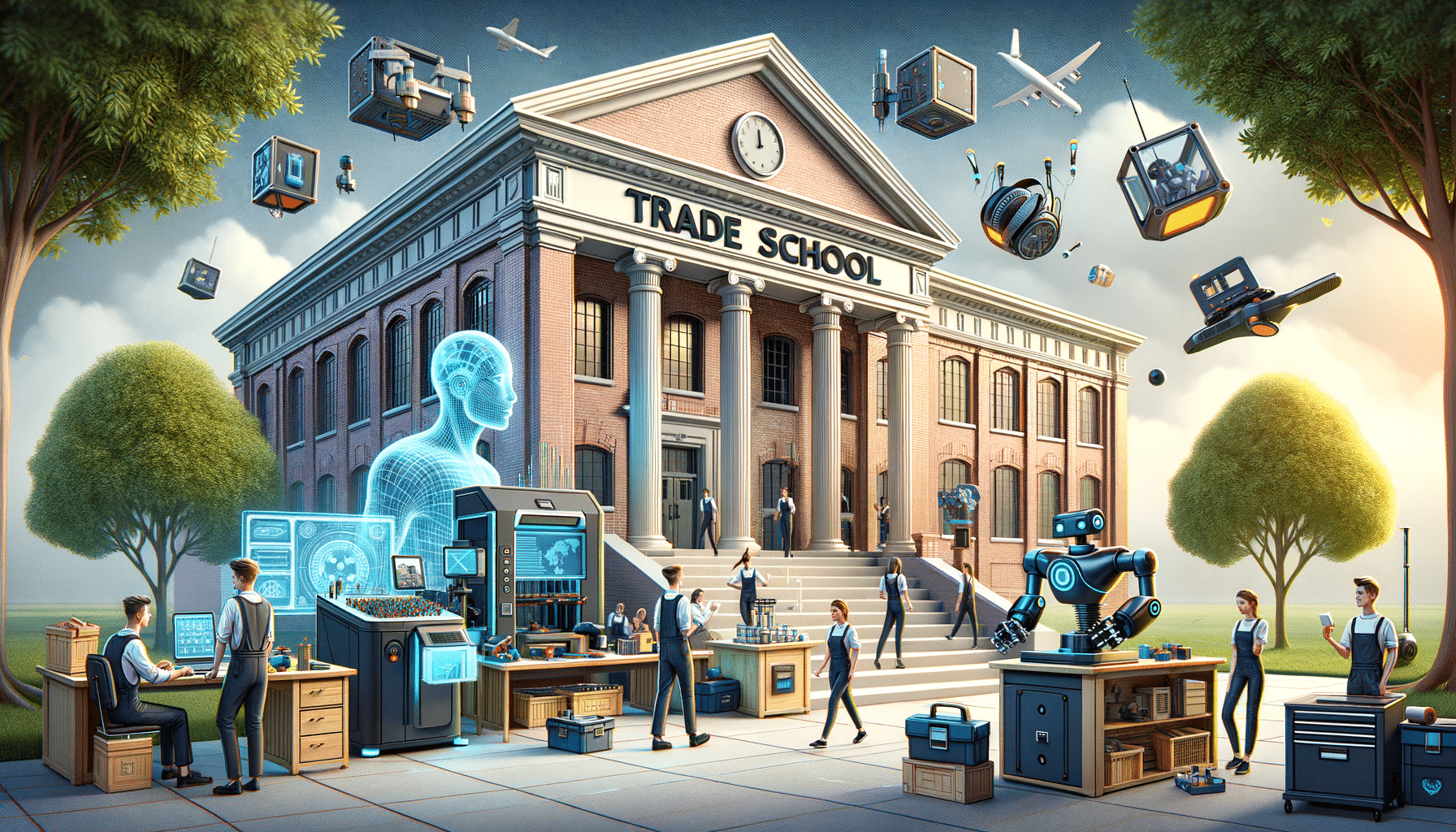
AI in Trade Schools: Enhancing Skill Development with Technology
The Role of AI in Trade Education
Artificial Intelligence (AI) is revolutionizing the landscape of trade schools by offering personalized learning experiences and improving training efficiency. AI-driven tools are being integrated into curricula to provide students with tailored educational content, real-time feedback, and interactive simulations. These advancements are crucial in preparing students for success in various trades, as they allow learners to engage with material that is directly relevant to their chosen fields.
One of the significant advantages of AI in education is its ability to adapt to individual learning paces. AI systems can analyze a student’s performance and adjust the difficulty level of tasks accordingly, ensuring that each student can progress at their own speed. This personalized approach helps in addressing the unique needs of every learner, making education more inclusive and effective.
Moreover, AI tools can simulate real-world scenarios, providing students with hands-on experience that is essential in trade education. For instance, AI-driven simulators can replicate complex machinery operations, allowing students to practice and hone their skills in a controlled environment. This not only enhances their practical abilities but also boosts their confidence, making them better prepared for the workforce.
AI-Powered Tools and Resources
Trade schools are increasingly adopting AI-powered tools to enhance their educational offerings. These tools range from intelligent tutoring systems to virtual reality (VR) applications that provide immersive learning experiences. Intelligent tutoring systems use AI algorithms to assess a student’s understanding of a subject and offer customized exercises to improve their skills. This targeted approach ensures that students receive the support they need to excel in their studies.
Virtual reality applications, combined with AI, create realistic simulations of trade environments, allowing students to practice tasks that would otherwise be difficult or dangerous to perform in a traditional classroom setting. For example, welding students can use VR headsets to simulate welding tasks, gaining valuable experience without the risks associated with real-world welding.
Additionally, AI-driven analytics tools are being used to track student progress and identify areas where they may need additional support. By analyzing data on student performance, educators can tailor their teaching strategies to better meet the needs of their students, ultimately improving educational outcomes.
Challenges and Considerations
While the integration of AI in trade schools offers numerous benefits, it also presents certain challenges that need to be addressed. One of the primary concerns is the cost associated with implementing AI technologies. Trade schools often operate on limited budgets, and investing in AI tools can be financially burdensome. To overcome this, schools may need to seek partnerships with technology companies or apply for grants that support educational innovation.
Another consideration is the need for educators to be trained in using AI tools effectively. Teachers must understand how to incorporate AI into their teaching methods and how to interpret the data generated by these systems. Professional development programs focused on AI literacy can help educators become more comfortable with these technologies, ensuring that they are used to their full potential.
Furthermore, there is the issue of data privacy and security. As AI systems collect and analyze vast amounts of student data, it is crucial to ensure that this information is protected from unauthorized access. Trade schools must implement robust data protection measures to safeguard student privacy and comply with relevant regulations.
The Future of AI in Trade Schools
The future of AI in trade schools looks promising, with ongoing advancements in technology likely to further enhance educational experiences. As AI continues to evolve, it is expected to become even more integrated into trade education, offering new opportunities for personalized learning and skill development.
One potential future development is the use of AI in career guidance. By analyzing a student’s skills, interests, and performance, AI systems could provide personalized career recommendations, helping students make informed decisions about their future paths. This could lead to higher job satisfaction and better alignment between student skills and industry needs.
Additionally, AI could play a role in bridging the gap between education and industry. By collaborating with trade schools, industries can help shape AI-driven curricula that align with current job market demands. This collaboration ensures that students are equipped with the skills needed to succeed in their chosen trades, ultimately benefiting both students and employers.
Conclusion: Embracing AI for a Brighter Future
AI is transforming trade schools by offering personalized learning experiences and improving training efficiency. With AI-driven tools, students can access tailored educational content, receive real-time feedback, and engage in simulations that enhance their practical skills. While challenges such as cost, educator training, and data privacy need to be addressed, the potential benefits of AI in trade education are significant.
As technology continues to advance, trade schools have the opportunity to embrace AI and create a more dynamic and effective learning environment. By doing so, they can better prepare students for success in various trades, ensuring that they are equipped with the skills needed to thrive in an ever-changing job market. Embracing AI is not just about keeping up with technological trends; it’s about investing in the future of education and workforce development.


